Hi steemits from all around the world,
My name is Claudiu ( 21 ) and I live in Romania, but currently I'm on my long awaited cuisine exploring trip so I decided to share my experience with you. :)
When you arrive in Tbilisi, border agents don't just stamp your passport; they hand you a bottle of wine. It's a fitting welcome to Georgia, a mountainous country sandwiched between Europe and Asia, where dinner guests are exalted as "gifts from God" and traditional feasts called supras unfold in biblical proportions, sometimes lasting for days on end.
It's easy to lose track of time at the Georgian table. On a recent visit to the country's capital, I joined some friends for a dinner that entailed a dizzying array of salads, followed by steaming vats of heady stews and braises, gallons of orange wine, and occasional forays into polyphonic harmony, a signature feature of Georgian folk music. Staggering back to my hotel at 4 a.m., stuffed and delirious, I felt like I had emerged from a culinary fever dream.
Variables aside, there are certain dishes you shouldn't leave Georgia (or a Georgian restaurant) without tasting. These are the non-negotiables—the unforgettable bites that keep Georgia on my mind, and in my kitchen.
1. KHACHAPURI ADJARULI
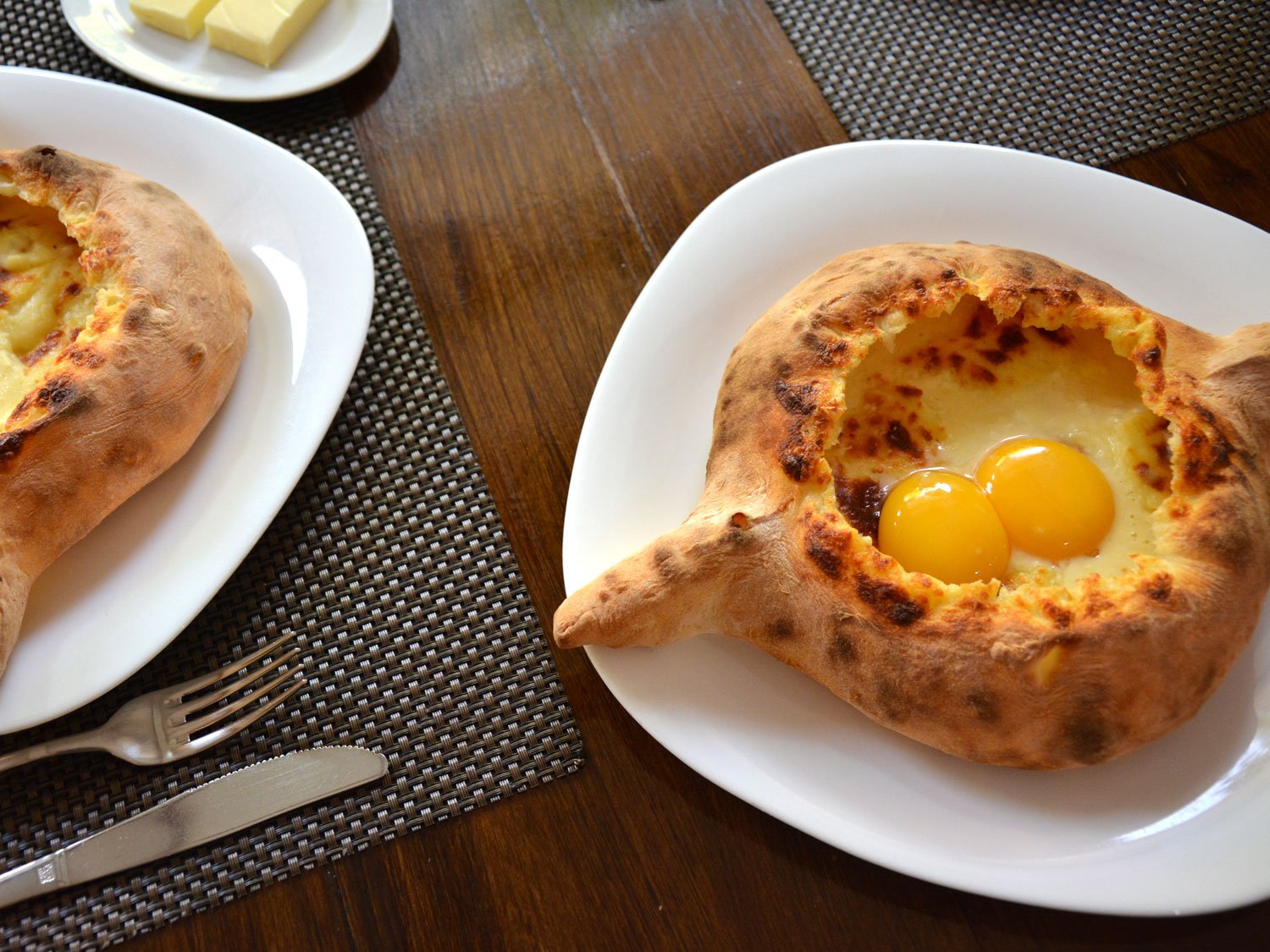
A molten canoe of carbohydrates and dairy, the quantity of sulguni cheese alone in khachapuri Adjaruli is enough to land a lactose-intolerant friend in the ER. But the decadence doesn't end there. Seconds after the bread is pulled from the toné, a baker parts the cheese to make way for a final flourish: hunks of butter and a cracked raw egg. When the bubbling mass is placed before you, you must wield your spoon fearlessly and, working from the yolk out, vigorously swirl the ingredients together until hypnotizing spirals of orange and white begin to appear. At this point—and God forbid the mixture get cold—tear off a corner of bread and dunk with conviction.
This is how Adjarians eat khachapuri, an umbrella genre of cheese-filled breads that are sold hot at hole-in-the-wall bakeries around the country. While each region has its favorite iteration of khachapuri—vegetables, meats, or legumes may be added—khachapuri Adjaruli has eclipsed the competition to become Georgia's national dish.
2. KHINKALI
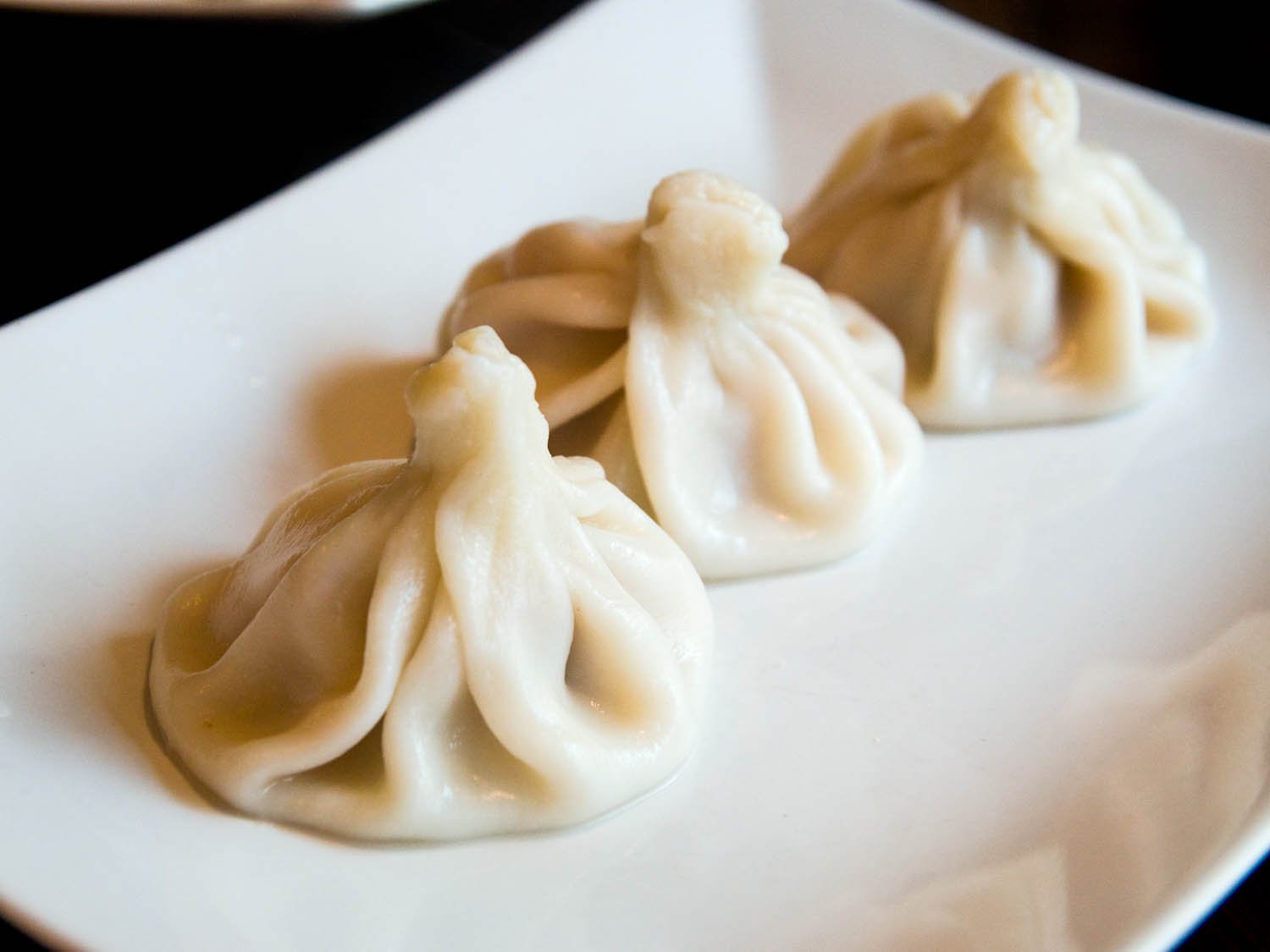
They say you can judge a good khinkali, or Georgian soup dumpling, by how many folds it has: Tradition dictates that fewer than 20 is amateurish. But when a platter of pepper-flecked khinkali hits the table, counting pleats is never anyone's first priority. Eating the khinkali is, and it requires urgency and exacting technique; without learning the latter, you risk being teased if you're in Georgian company. First and foremost, khinkali is finger food: Make a claw with your fingers and grab onto the dumpling from its topknot. Then, biting a small hole in the side, tilt your head back to slurp out the broth before sinking your teeth into the filling. Discard the topknot, take a swig or two of beer, sigh with pleasure, and repeat.
Historians speculate that khinkali, which bear a striking resemblance to Central Asian manti, were first brought to the region by the Tartars, who ruled what is now Georgia and Armenia for most of the 13th century. Today, the best sakhinkles (khinkali houses) are said to be found in Pasanauri, a village 50 miles north of Tbilisi, where wild mountain herbs like summer savory and ombalo mint accent the filling. If a khinkali pilgrimage isn't in the cards, though, Khinklis Sakhli is a favorite neighborhood spot among locals in Tbilisi.
3. LOBIO
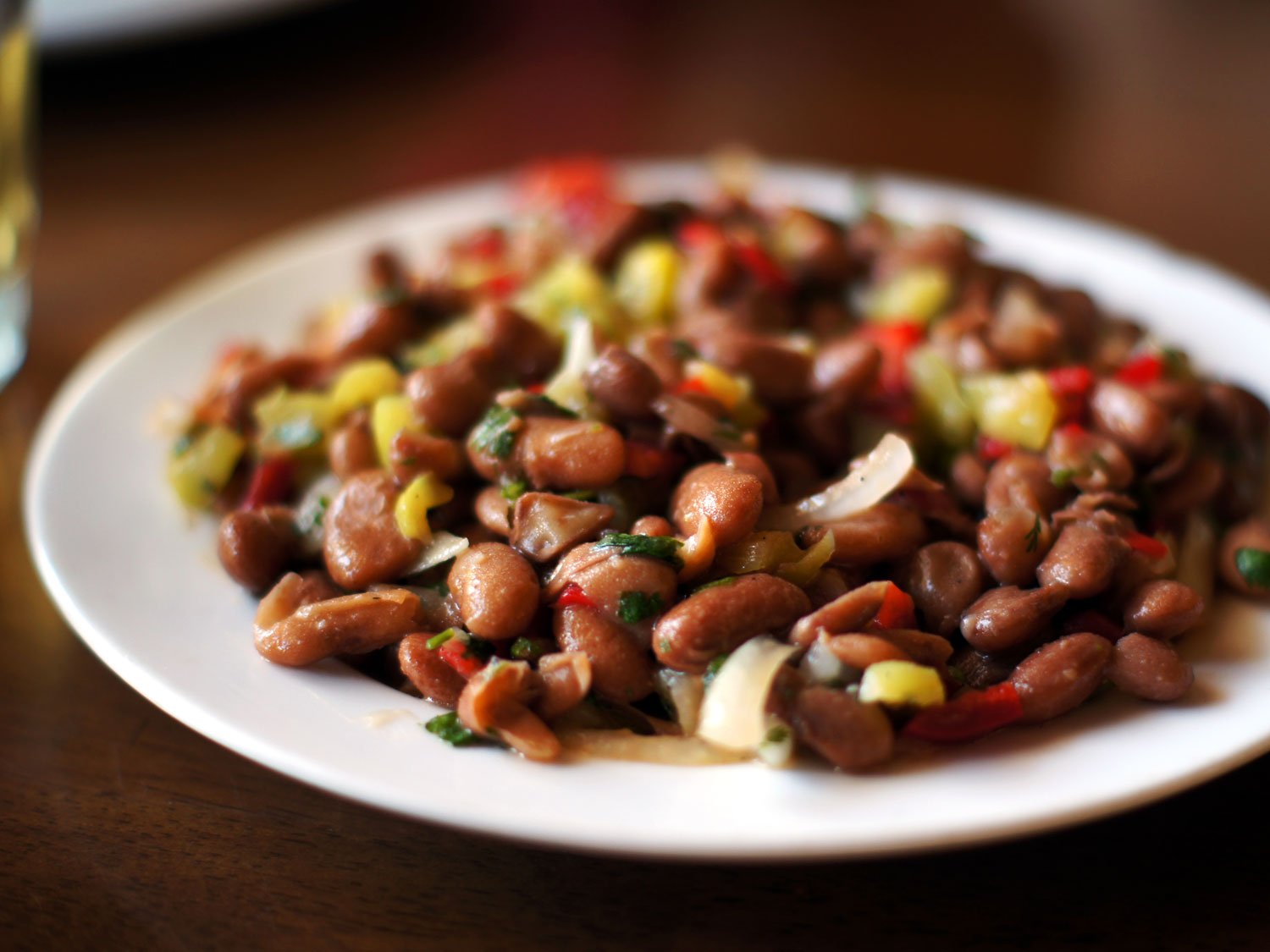
Who knew the kidney bean had such untapped potential? My eyes got wider as I swallowed spoonful after spoonful of lobio at Salobie, a restaurant in Mtskheta dedicated to this very dish. Texturally, lobio falls somewhere between refried beans and soup, a consistency achieved by pounding slow-cooked beans in a mortar and pestle, but the real revelation is in the flavor: A bracing slurry of fried onions, cilantro, vinegar, dried marigold, and chilies is stirred into the pot just before serving.
Lobio's loyal sidekick is mchadi, a griddled cornbread whose only function is ancillary. Reminiscent of Southern cornbread in its crumbliness, white color, and absence of sugar, it's one of the few Georgian breads that doesn't rely on the toné. Anyone with a skillet can make mchadi, which requires just three ingredients (cornmeal, salt, and water) and takes half an hour, start to finish.
4. KHARCHO
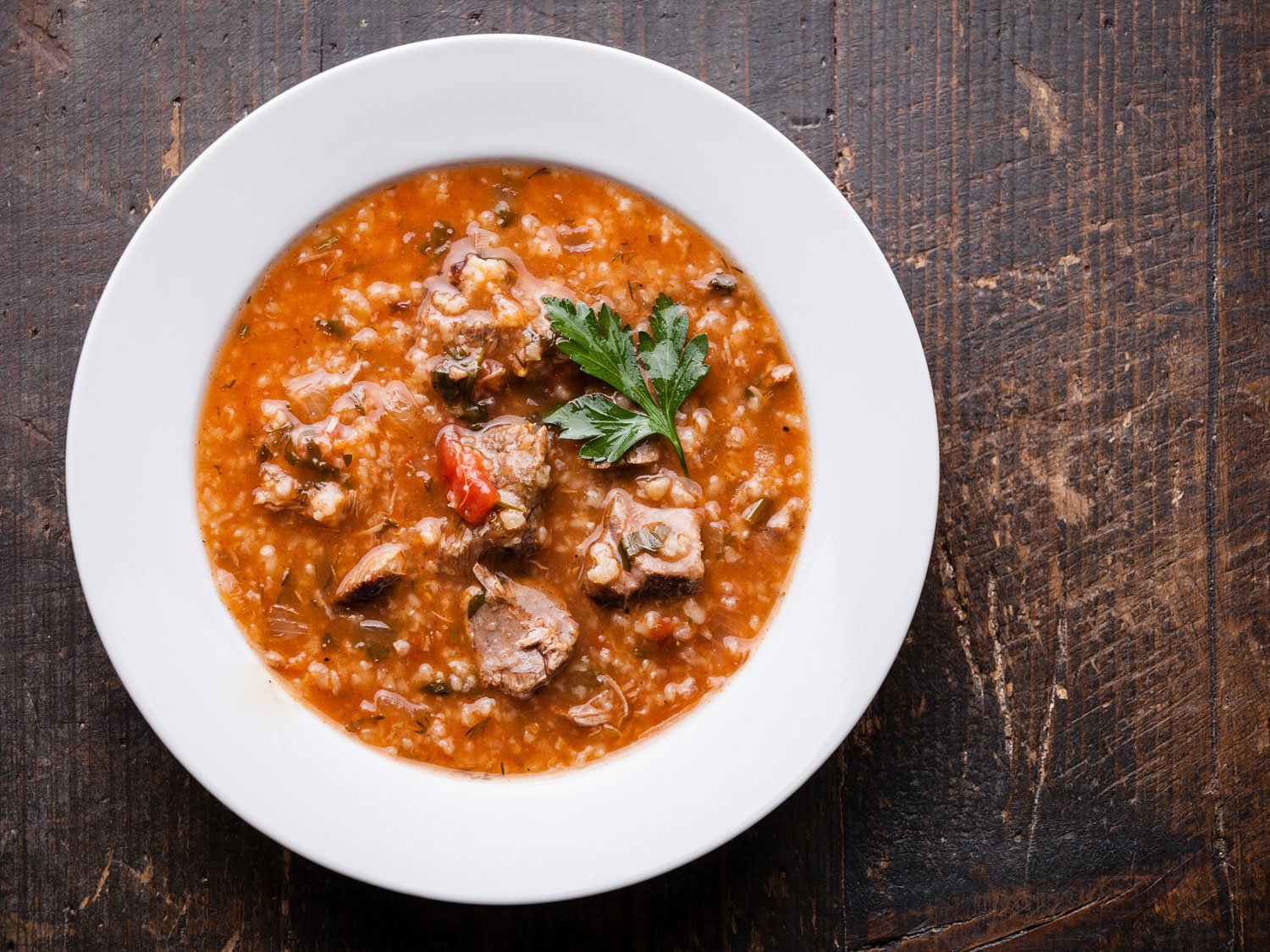
Kharcho is Georgian comfort food at its finest, and it's become so popular throughout the region that Russians have incorporated it into their rotation of winter standbys. Amber in color and redolent of garlic, khmeli suneli (a Georgian five-spice blend), and cilantro, kharcho begins with chicken or beef, which is seasoned and seared before it's tucked into a sauce enriched with walnuts and perked up by torn bits of sour tklapi. After a couple of hours, when the meat is infused with spice and falling off the bone, the kharcho is ladled into bowls and served alongside baskets of chewy shoti bread, a savory vehicle for any leftover juices.
5. PKHALI
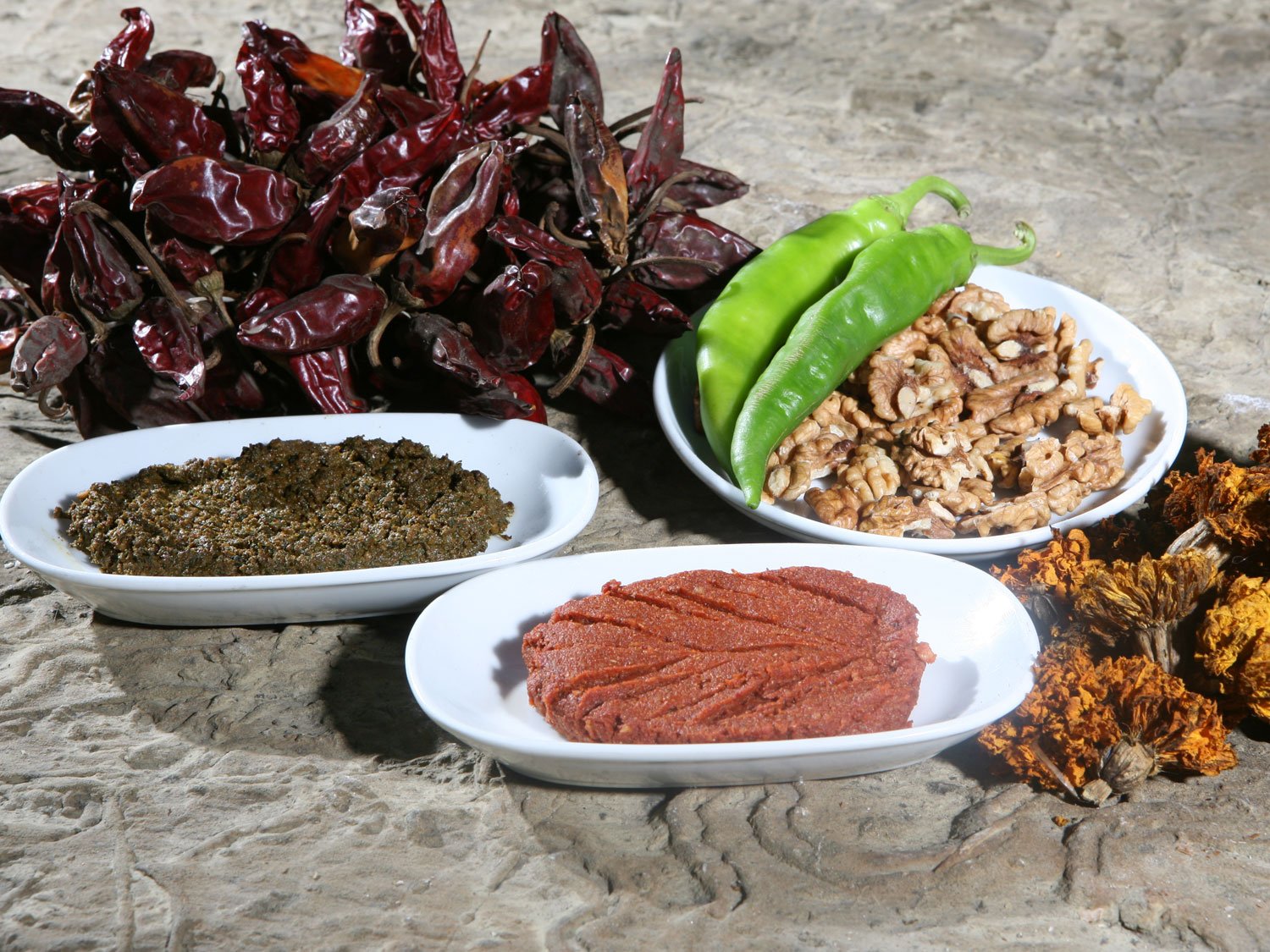
In a country where meat was historically reserved for special occasions, it's no wonder that elaborate vegetarian dishes continue to take center stage in Georgia's culinary canon. Pkhali, a family of salads that might be better described as vegetable pâtés, are made with whatever vegetable is on hand (beets, carrots, and spinach are common) and served over bread. The method is foolproof, to boot: Just boil the veg of choice, purée, and squeeze in some lemon juice, minced garlic, and a handful each of cilantro and ground walnuts for good measure. Georgian cooks will often whip up several types of pkhali, plating them side by side and sprinkling the tops with pomegranate seeds.
Hope you liked it. See you next time! :)
